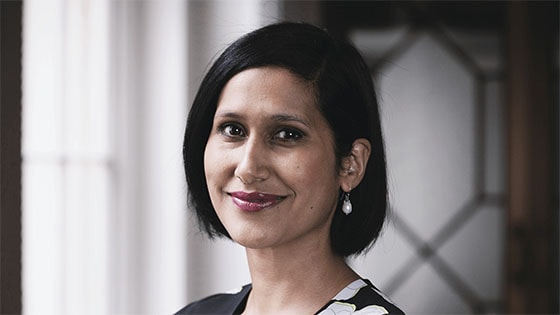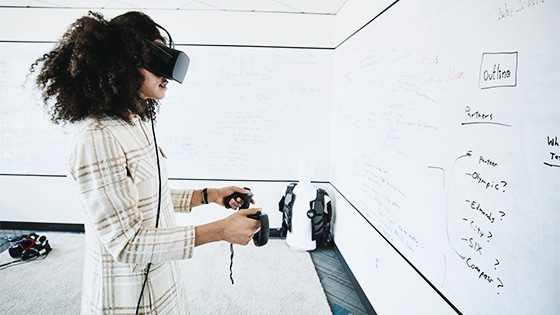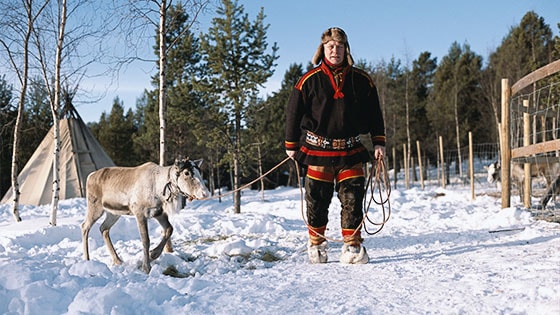| DELIVERING ON DIVERSITY, GENDER EQUALITY, AND INCLUSION
|
|
| In this issue, we look at Britain’s engineers, what people typically expect when they meet a CEO, and how the Sámi of Northern Europe are leading climate action. |
|
|
| Dr. Hayaatun Sillem is the CEO of the UK’s Royal Academy of Engineering—the first woman and the first person of color to serve in that role. In a recent episode of the McKinsey Global Institute’s Forward Thinking podcast, she reflects on the evolving role of engineering in a dematerialized world, engineering’s vital role in sustainability, and how to boost the number of British women in the field. Here are four highlights from a multifaceted discussion. |
| People had to check themselves. When Dr. Sillem became head of the Royal Academy of Engineering, many people meeting her for the first time were surprised. In Dr. Sillem’s words: “There were a lot of people who I think were quite perplexed at the fact that I was the chief exec of the Royal Academy of Engineering. Clearly not what they were expecting.” |
| In her experience, being different built empathy. Growing up, Dr. Sillem was “very aware of being different.” As she explains, “My mother is half Indian, half English. And my father is Cape Malays. He comes from South Africa, but his ancestors probably came primarily from Indonesia. Cape Malays is a mixed ethnic group in itself. And then my name, Hayaatun, is a sort of Indonesian version of an Arabic name.” (The word حياة, hayat, means “life” in Arabic.) |
| For a long time, she tried to minimize certain aspects of her identity and behave in ways she thought would make other people feel comfortable. It was only when she was in her 30s that she realized that she had been “knocking the corners off” herself. |
| Dr. Sillem brings those life experiences to the work she is now doing on diversity and inclusion—and she feels that they’ve made her a better leader. “I always think that differentness is a good basis for developing empathy, which I think is a really important part of good leadership,” she says. (That’s a view she shares with many LGBTQ+ business leaders.) |
|
| The UK needs more diverse engineers. Just under 15 percent—that’s the share of British engineers who are women. Dr. Sillem points out that if the UK continues on its current trajectory, it will take until 2085 to achieve gender parity in the people pursuing engineering degrees. As she puts it: “Engineers play a very important role in shaping society. They need to reflect society.” That helps ensure that all the infrastructure, products, and services that engineers develop are truly inclusive, and that the benefits are equitably distributed. |
| Engineering also represents the future of work: McKinsey projects that across countries (including the UK), demand for tech design, engineering, and maintenance will substantially rise in the wake of the COVID-19 pandemic. In fact, over the next decade, the greatest increase in labor demand will be for these and other technological skills. |
| This makes it even more essential to correct stereotypes about what engineers look like, what they wear to work (it’s not all PPE), and what they do. Enter “This is Engineering,” a campaign launched by the Royal Academy of Engineering to help change people’s perceptions—starting with actual images (along with short videos). The goal is to show young Britons all the possibilities that engineering holds. Among the campaign’s key messages: “Being green is engineering.” |
|
| Indigenous Europeans are leading climate innovation. Dr. Sillem is chair of judges of the St Andrews Prize for the Environment, an international initiative that recognizes innovative responses to environmental challenges. The 2021 winner: the Snowchange Cooperative. |
| The organization, a network of Indigenous and local communities around the world, focuses on restoring and rewilding landscapes in Finland under the leadership of the Indigenous Sámi people—blending their traditional knowledge with the latest science, and drawing on Snowchange’s relationships with the Intergovernmental Panel on Climate Change and other leading scientific bodies. As Dr. Sillem explains, Snowchange is “doing a really thorough, evidence-based set of activities, which we believe have the potential to drive systemic change and impact at scale for both climate and communities.” As Snowchange itself says, “Our stories bring the land alive—they are very powerful stories.” (Pictured above: a Sámi reindeer breeder. Rapid climate change is threatening Arctic reindeer—and reindeer herding, a traditional Sámi livelihood.) |
| Dr. Sillem takes on another misconception: “Sometimes people think about projects that focus on Indigenous communities as being things that happen a long way from Europe. This is happening right on our doorstep. It has huge potential for climate gains, but there’s also a lot that we can learn about how to do this in a more impactful way across the globe.” |
|
| — Edited by Julia Arnous, an editor in McKinsey’s Boston office |
|
Did you enjoy this newsletter? Forward it to colleagues and friends so they can subscribe too.
Was this issue forwarded to you? Sign up for it and sample our 40+ other free email subscriptions here.
|
|
|
This email contains information about McKinsey’s research, insights, services, or events. By opening our emails or clicking on links, you agree to our use of cookies and web tracking technology. For more information on how we use and protect your information, please review our privacy policy.
|
|
You received this email because you subscribed to the Intersection newsletter.
|
|
Copyright © 2022 | McKinsey & Company, 3 World Trade Center, 175 Greenwich Street, New York, NY 10007
|
|
|
|




